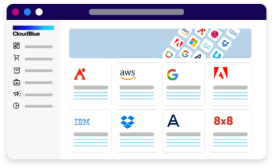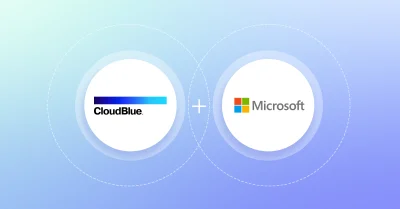Compared to North America, which was an early adopter of the subscription model, Asia Pacific has a lot of catching up to do. But the coronavirus pandemic is serving as a catalyst for the growth of the subscription economy in the region.
Subscriptions in consumer spaces such as entertainment are proving particularly successful. APAC, according to Digital TV Research, will have 698 million Video on Demand (VOD) subscriptions by 2026, up from 502 million at end-2021. The business intelligence firm also forecasts that revenues from subscription-based VOD will double between 2020 and 2026 to $28 billion in the region.
Australia and New Zealand, commonly referred to together as ANZ, are two economies that could contribute significantly to further development of subscription offerings in APAC given the more mature nature of their subscription markets.
Australians have around 37 million subscriptions to entertainment services, including VOD, gaming, and music offerings, and this number is projected to hit 58 million by 2024. One in two subscription companies in Australia are still growing despite the economic setbacks of COVID-19, with the growth of almost one in five having accelerated during the pandemic. Meanwhile, four out of every five New Zealanders use at least one subscription service.
In the B2B sector, Australian subscription companies, according to subscription software provider ProfitWell, are “noticeably better” than their counterparts in the United States from a net promoter score standpoint, which is a measure of customer satisfaction. New Zealand is also growing fast in this area.
Despite these accomplishments, there is significant room for improvement in the B2B subscription sphere in both countries, and the onus is mainly on Independent Software Vendors (ISVs) to push the industry forward.
To take advantage of the benefits of subscription business models, Australian and New Zealand businesses should take the following points into consideration and take swift action if they want to outperform the competition.
Setting up subscription business ecosystems to transact
Australian and New Zealand ISVs are at a stage in their maturity where their ecosystems are not driving monetization in an efficient manner. Their present ecosystems and marketplaces largely consist of websites where a number of third-party solutions, including those from their partners, are listed rather than being set up to transact.
This means that a buyer or end customer cannot purchase third-party developer solutions through those platforms, which is concerning since an inadequate monetization strategy is one of the prevalent reasons behind the failure of ecosystems.
Companies based out of Australia tend to have a lower rate of growth when it comes to their average revenue per user, indicating that monetization is lagging compared to other ecosystems. New Zealand is also still far from being a market leader when it comes to monetization of such services.
To address this issue, ISVs in ANZ must move beyond the simple listing of partner solutions on their websites and develop or use true e-commerce platforms to drive sales for partner services on their sites or marketplaces.
To start, they should look at their partner ecosystem and see if the current solutions make sense and align with the portfolio of offerings they have developed. They should also ask themselves if those offerings are providing customers with outcomes or are just there to make up the numbers.
ISVs in ANZ then need to map out a monetization strategy. To do this, they should decide if they will act as a reseller, will simply pass through revenues to the intellectual property (IP) owner, will charge a “membership” fee for participating in the ecosystem, or will have a rebate or commercial arrangement with the IP owner.
Once this is established, it is then a decision around build versus buy. And there is a common trap to avoid at this stage.
Software developers quite often think they should build everything themselves from scratch since they have developers on board. However, this takes attention away from the core value of their own solutions and distracts resources from building on their current solutions.
ISVs should also bear in mind that ecosystem solutions have to be easy to implement, provide a fast time to revenue, help establish global channels for sale, open new ecosystems to resell their software solutions, and allow for automation of processes such as ordering, billing, fulfilment, and subscription management.
Efficiently leveraging data generated from the ecosystem
Setting up ecosystems for transactions is only the beginning, and all the data generated from transactions is worthless if Australian and New Zealand ISVs are not using it right.
Since creating a data ecosystem improves personalization and customer retention, ISVs must be aware of how their partners and their partners’ end customers are interacting with their software as well as the services that their third-party solution providers are giving to their customers.
To achieve this end, it is crucial to adopt technology and put systems in place that can better capture data from transactions and interactions within the ecosystem.
Modern technology can help ISVs in the ANZ region gain visibility into what customers are buying, when they are buying, and what the solution is attached to in terms of other purchases. It also enables them to assess customer usage of the platforms they have purchased to understand value and churn risk.
This level of information is difficult to collect through manual processes or non-transactional relationships with partners because visibility will be limited based on what is being captured or what partners share.
To address this issue, Australian and New Zealand ISVs need to consider integrating end-to-end digital supply chain management into their workflow as it gathers all of the data in one place, which can be used for reporting and future strategy.
Meanwhile, it is important that ISVs have a firm understanding of the main components that make up a data ecosystem, namely sensing, collection, wrangling, analysis, and storage.
Sensing is the process of identifying data sources and involves evaluating the quality of data to determine if it is valuable. After identifying a potential data source, data must be collected. Data wrangling refers to a set of processes designed to transform raw data into a more usable format through merging multiple datasets, deleting unnecessary or incorrect data, identifying and filling gaps in data, and structuring data for future analysis.
Using technology to provide the best customer experience for subscribers
To maintain and grow a subscriber base, ISVs in ANZ must ensure a great customer experience. Studies reveal that service providers with a focus on customer experience enjoy higher brand awareness, more employee satisfaction, higher rates of customer retention, repeat purchases, and increased average order values and customer lifetime value.
Modernizing applications is key to offering better customer experience, and technologies such as customer relationship management (CRM), billing, and invoicing automation systems as well as ticketing systems should be put in place to ensure a seamless journey.
Additionally, subscription businesses should look to adopt technology that simplifies interactions with partners in order to help bundle solutions together for end customers from various types of ISVs.
However, subscription businesses in the ANZ region should take heed that building better customer experience systems is the easy part and that there are other technology-related barriers to eliminate.
Those include legacy IT, limited budget, complexity, lack of staff with the appropriate skill sets, lack of expertise to lead transformation activities, unclear digital transformation strategy, and lack of a trusted partner or advisor to work on digital transformation activities.
Once these hurdles are surmounted, the rewards start to come in as harnessing technology in this space enables businesses to advance their strategy, use intelligent automation to boost efficiency, facilitate greater team collaboration, access real-time data analysis, understand customer behavior and needs, and make decisions more quickly, easily, and efficiently.
The path ahead
Total subscription business revenues globally have grown 437% over the last decade and are predicted to pass $228 billion worldwide this year.
Australian subscriptions companies, as ProfitWell suggests, may not be the “fastest growing” but tend to focus on experience and customer retention much better than their counterparts in the U.S. This is a great accomplishment as the U.S. has a uniquely mature and strong subscription ecosystem. New Zealand subscription service providers seem to be on the right track as well.
If statistics are any indication, they are both well-positioned to capture a bigger share of this lucrative market if they set up subscription business ecosystems to transact, efficiently leverage data generated from the ecosystem, and use technology to provide the best customer experience for subscribers.













